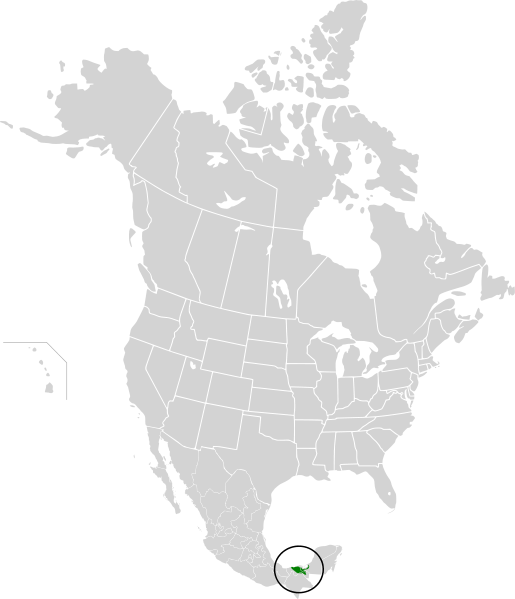The Pantanos de Centla: A Vital Biological Corridor in Southern Mexico
The Pantanos de Centla in southern Mexico is a unique and expansive tropical wetland ecoregion. Stretching across the states of Tabasco and Campeche, this area is a vibrant mosaic of seasonally flooded forests, freshwater swamp systems, and rich estuarine environments.
The Pantanos de Centla Ecoregion: A Vital Wetland Ecosystem in Southern Mexico
The Pantanos de Centla, situated in the heart of southern Mexico, is more than just a biosphere reserve—it represents a unique and expansive tropical wetland ecoregion. Stretching across the states of Tabasco and Campeche, this area is a vibrant mosaic of seasonally flooded forests, freshwater swamp systems, and rich estuarine environments. Its position at the confluence of the Grijalva and Usumacinta rivers makes it a linchpin in maintaining regional biodiversity and ecological balance. Recognized under the Ramsar Convention for its wetland significance, the Pantanos de Centla ecoregion is both a natural treasure and a critical environmental asset.
Geographical and Hydrological Significance
Spanning approximately 17,200 square kilometers (6,600 sq mi), the Pantanos de Centla is one of Mexico's largest wetland areas. The region's geography is defined by its intricate network of rivers, lagoons, marshes, and estuaries. The hydrology of the area is dominated by the Grijalva and Usumacinta rivers, which flood large portions of the region during the rainy season, enriching the wetlands with sediment and nutrients. This dynamic interaction between water and land fosters an array of habitats, from mangroves along the Gulf of Mexico coastline to freshwater wetlands deeper inland.
The ecoregion's wetlands act as natural flood regulators, absorbing excess water during rainy periods and releasing it during dry seasons. Additionally, the Pantanos de Centla serves as a critical carbon sink, storing significant amounts of organic carbon in its soils and vegetation, thereby mitigating the impacts of global climate change.
Biodiversity Hotspot
Flora and Vegetation
The Pantanos de Centla is home to one of Mesoamerica's most diverse wetland flora collections. Its ecosystems support over 560 plant species, ranging from towering Black Olive trees in swamp forests to mangrove species in brackish coastal areas. The region's rich aquatic vascular flora is dominated by algae and floating plants that provide food and shelter for aquatic species. The wetlands' lush vegetation plays a vital role in stabilizing the soil, filtering water, and sustaining a variety of terrestrial and aquatic life forms.
Faunal Diversity
The region boasts an extraordinary array of animal species, many of which are endemic or endangered. Aquatic ecosystems harbor fish like the prehistoric alligator gar (Atractosteus spatula) and the snook, while reptiles such as the Morelet's crocodile thrive in swampy waters. The forests and wetlands are a haven for mammals, including jaguars, ocelots, and Baird's tapirs, which depend on the reserve's undisturbed habitats for survival.
Avian diversity is particularly notable, with over 250 bird species documented, ranging from migratory species like Jabiru storks to native residents like herons and egrets. The Pantanos de Centla is also a critical stopover point for migratory birds traveling between North and South America.
The Ecoregion as a Biological Corridor
The Pantanos de Centla is a vital biological corridor linking ecosystems across Tabasco and Campeche. This interconnected network allows species to migrate, adapt, and maintain genetic diversity, ensuring their resilience to environmental changes. Large mammals such as jaguars use this corridor for movement, while pollinators like bees and bats traverse its landscapes, supporting the reproduction of flowering plants and crops.
The ecoregion's strategic location also facilitates the movement of waterbirds between freshwater wetlands and coastal estuaries, contributing to the health of marine and terrestrial ecosystems. This connectivity underscores the Pantanos de Centla's role as a keystone ecoregion in Mesoamerica's ecological network.
Cultural and Human Interactions
Indigenous Heritage and Sustainable Practices
For centuries, Indigenous communities have relied on the Pantanos de Centla for sustenance and cultural identity. Traditional practices, such as sustainable fishing, small-scale farming, and harvesting of non-timber forest products, have allowed local populations to coexist harmoniously with their environment. Knowledge passed down through generations has fostered a deep understanding of the wetlands' ecological intricacies, shaping conservation efforts in the region.
Archaeological Significance
The Pantanos de Centla is steeped in history, with archaeological evidence suggesting its importance as a hub for ancient Mesoamerican civilizations. The waterways once served as vital trade routes, connecting coastal and inland regions. Artifacts uncovered from the area reflect a rich cultural tapestry, providing insights into the lives and practices of early inhabitants.
Conservation Challenges and Opportunities
Despite its ecological significance, the Pantanos de Centla faces mounting threats from human activity and climate change. Agricultural expansion, urban development, and deforestation have fragmented habitats, while pollution from fertilizers and industrial runoff degrades water quality. Additionally, rising temperatures and shifting rainfall patterns exacerbate the risk of extreme weather events, threatening biodiversity and human livelihoods.
Efforts to combat these challenges are multifaceted. The region's designation as a UNESCO Biosphere Reserve underscores its global importance and provides a framework for conservation initiatives. Collaborative projects between local communities, scientists, and governmental organizations focus on habitat restoration, sustainable land use, and the promotion of ecotourism as an alternative to environmentally harmful practices.
Conclusion
The Pantanos de Centla ecoregion is a vibrant testament to the interdependence of land, water, and life. As one of the most significant wetlands in Mesoamerica, it plays a critical role in sustaining biodiversity, regulating hydrology, and supporting human communities. Protecting this unique ecoregion is not just a local priority but a global imperative. By fostering sustainable practices, promoting conservation awareness, and addressing environmental threats, the Pantanos de Centla can continue to thrive as a sanctuary for life and a beacon of ecological harmony.

Map depicting the approximate area of the Pantanos de Centla ecoregion (in green).